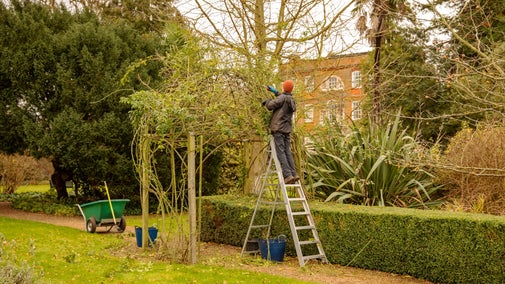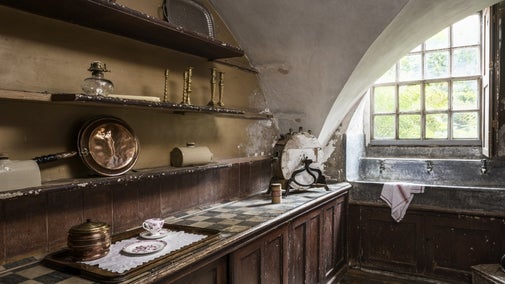Peckover House

Jump to
Uncover the rich history behind Peckover House and the tales within each room, with our team of volunteer guides on hand to personally talk you through them. This quintessential example of a Georgian home was lived in by the Peckover family for 150 years, and has many stories to tell.
The Banking Hall
When the Wisbech and Lincolnshire bank first opened its doors, customers entering the Banking Hall would have found themselves in a large airy room. Ranged in front of them the clerks, equipped with scales to check the weight of coins to be deposited. Behind the scenes the ledgers recording the bank’s financial transactions were stored on wooden shelving.
Although the Banking Hall was partially demolished in the 1870s, some remains above ground so you can appreciate its former scale and layout. The surviving sections now contain an exhibition space relating to the history of the Peckovers’ banking business. Below ground the huge-doored brick vaults that once held gold and silver coinage survive little changed.

The Library
Completed in 1878 to designs by notable Norwich architect Edward Boardman, the Library was built to house Alexander Peckover's growing collection of books. Fitted book presses lined the new room which was furnished with walnut and mahogany furniture.
When a family member took down one of the volumes, the range of subjects they could choose from was broad; architecture, religion, natural history and science. Alexander's library was renowned for its valuable collection of early bibles, atlases and early printed books, one of which is still housed there today - the Catechesis.
Sales in the early 20th century stripped the library of its books and furniture, leaving a stark shell, and dispersing Alexander’s collection across the globe. In 1998-9 the National Trust, following Boardman’s original design, reconstructed the book presses on one of the walls and replicated the hand-blocked wallpaper that once graced the room.
The Dining Room
Naturally lit by two large windows, this room is light and airy. Although electricity was introduced into the house in the 1920s, Alexandrina and Jane Peckover preferred to dine with candles casting their light on the walls and curtains.
Today, reproduction Chippendale chairs owned by the family and a late Victorian bracket clock remain on display. The room reflects Alexandrina’s later years in the house.

Cabinet of Curiosities
Alexander was an avid collector and the Cabinet of Curiosities is testament to his many travels throughout Europe and North Africa.
Cabinets of curiosities, also known as 'Wunderkammer', were small collections of extraordinary objects which, like today's museums, attempted to categorise and tell stories about the wonders and oddities of the natural world.
All of the Peckovers were great travellers and many of their journeys are recorded in their diaries and watercolour albums that are held in the archive collection. Alexander's grandson, Roland Penrose, remembers his grandfather looming over him as he surveyed the contents, with his commanding voice booming 'Keep off, dirty paws!'.
You might also be interested in
The history of Peckover
With their banking wealth and philanthropy the Peckovers left a lasting mark on the Cambs town of Wisbech. Find out how their Quakerism and artistic leanings coloured their story.

The gardens at Peckover
Tucked away behind a Georgian mansion sits a beautiful Victorian garden. Reflecting the family's love of travelling, horticulture and gardening, this hidden gem is full of surprises.

Planning your visit to Peckover House & Gardens
Discover the story behind Peckover house and gardens. If you're planning a visit, you can find out everything you need to know here...
